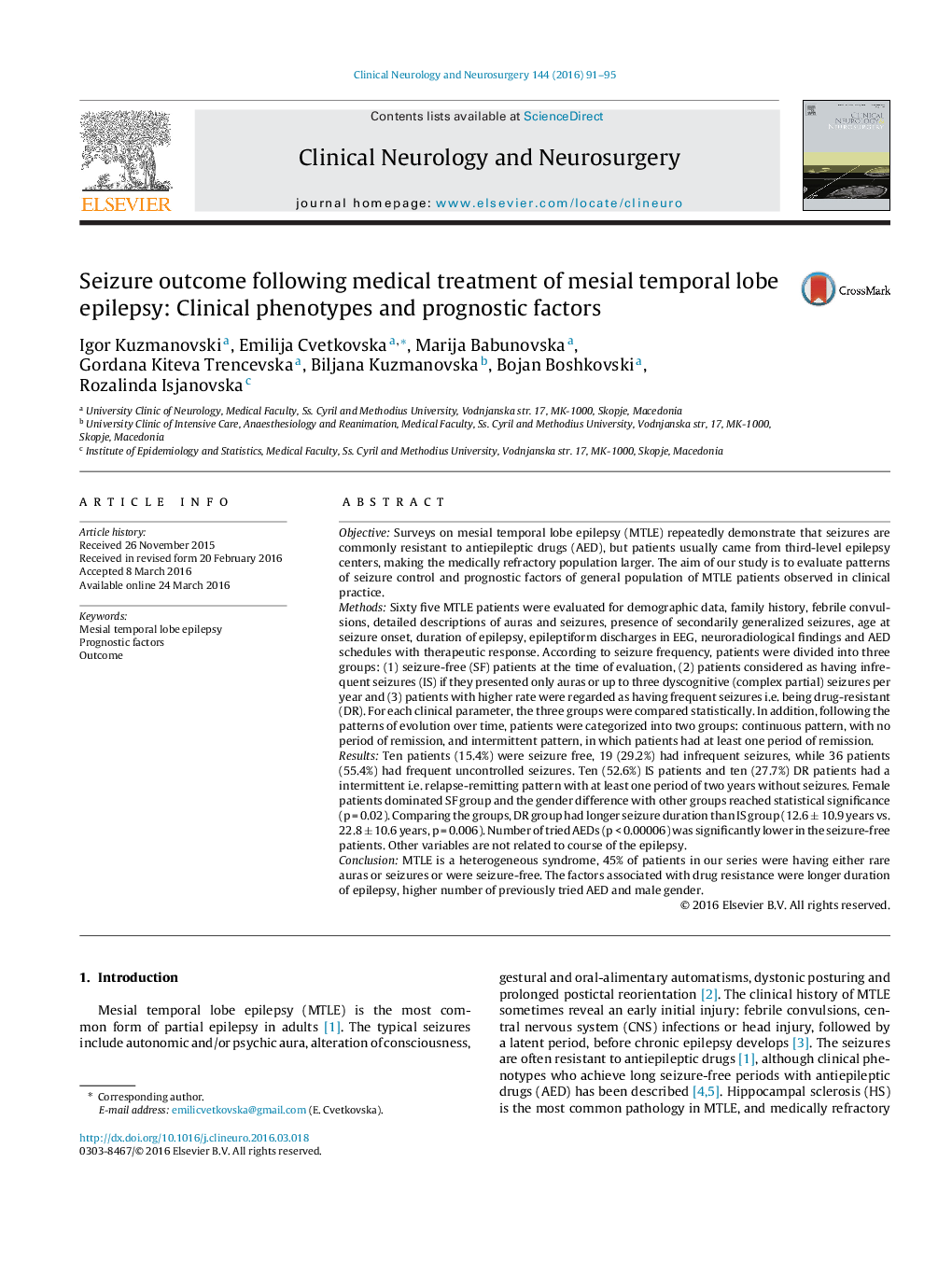| کد مقاله | کد نشریه | سال انتشار | مقاله انگلیسی | نسخه تمام متن |
|---|---|---|---|---|
| 3039496 | 1579678 | 2016 | 5 صفحه PDF | دانلود رایگان |
• Sixty-five medically treated mesial temporal lobe epilepsy patients were evaluated.
• 45% of patients were having either rare auras and seizures or were seizure-free.
• Longer disease duration and higher number of tried AEDs were associated with drug-resistance.
ObjectiveSurveys on mesial temporal lobe epilepsy (MTLE) repeatedly demonstrate that seizures are commonly resistant to antiepileptic drugs (AED), but patients usually came from third-level epilepsy centers, making the medically refractory population larger. The aim of our study is to evaluate patterns of seizure control and prognostic factors of general population of MTLE patients observed in clinical practice.MethodsSixty five MTLE patients were evaluated for demographic data, family history, febrile convulsions, detailed descriptions of auras and seizures, presence of secondarily generalized seizures, age at seizure onset, duration of epilepsy, epileptiform discharges in EEG, neuroradiological findings and AED schedules with therapeutic response. According to seizure frequency, patients were divided into three groups: (1) seizure-free (SF) patients at the time of evaluation, (2) patients considered as having infrequent seizures (IS) if they presented only auras or up to three dyscognitive (complex partial) seizures per year and (3) patients with higher rate were regarded as having frequent seizures i.e. being drug-resistant (DR). For each clinical parameter, the three groups were compared statistically. In addition, following the patterns of evolution over time, patients were categorized into two groups: continuous pattern, with no period of remission, and intermittent pattern, in which patients had at least one period of remission.ResultsTen patients (15.4%) were seizure free, 19 (29.2%) had infrequent seizures, while 36 patients (55.4%) had frequent uncontrolled seizures. Ten (52.6%) IS patients and ten (27.7%) DR patients had a intermittent i.e. relapse-remitting pattern with at least one period of two years without seizures. Female patients dominated SF group and the gender difference with other groups reached statistical significance (p = 0.02). Comparing the groups, DR group had longer seizure duration than IS group (12.6 ± 10.9 years vs. 22.8 ± 10.6 years, p = 0.006). Number of tried AEDs (p < 0.00006) was significantly lower in the seizure-free patients. Other variables are not related to course of the epilepsy.ConclusionMTLE is a heterogeneous syndrome, 45% of patients in our series were having either rare auras or seizures or were seizure-free. The factors associated with drug resistance were longer duration of epilepsy, higher number of previously tried AED and male gender.
Journal: Clinical Neurology and Neurosurgery - Volume 144, May 2016, Pages 91–95
